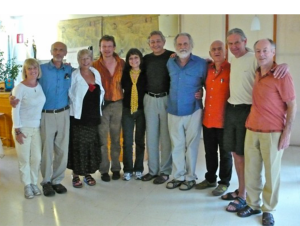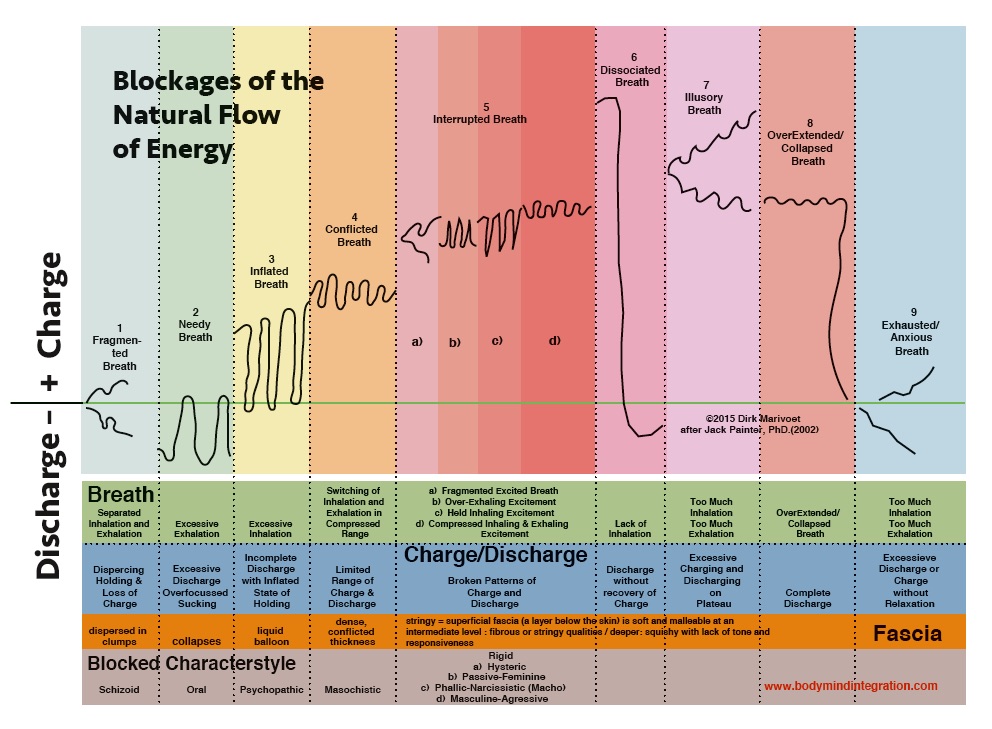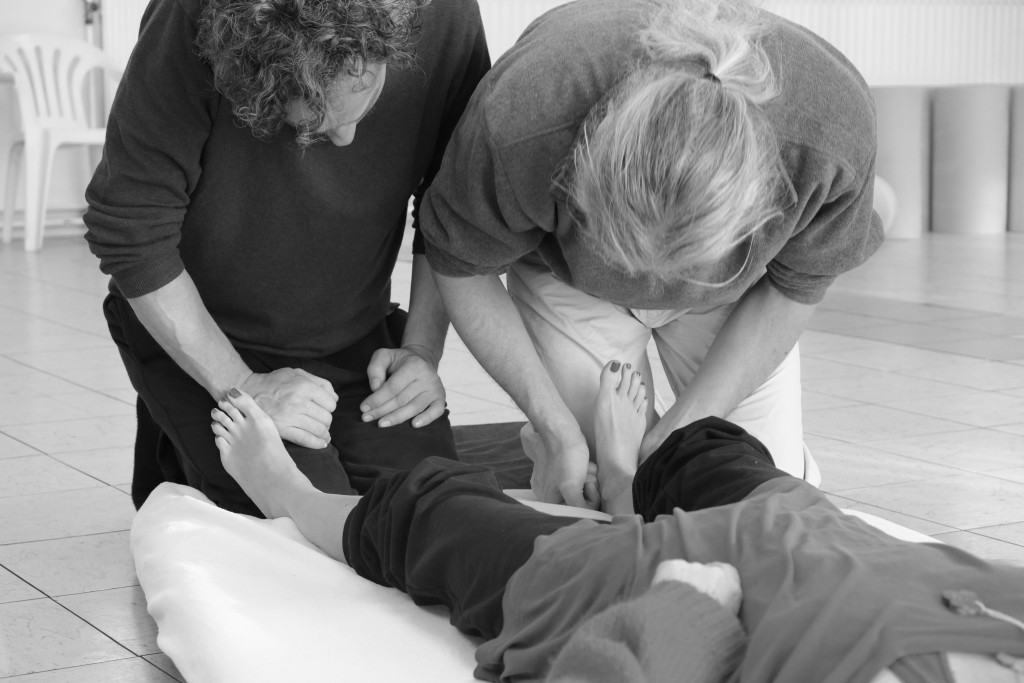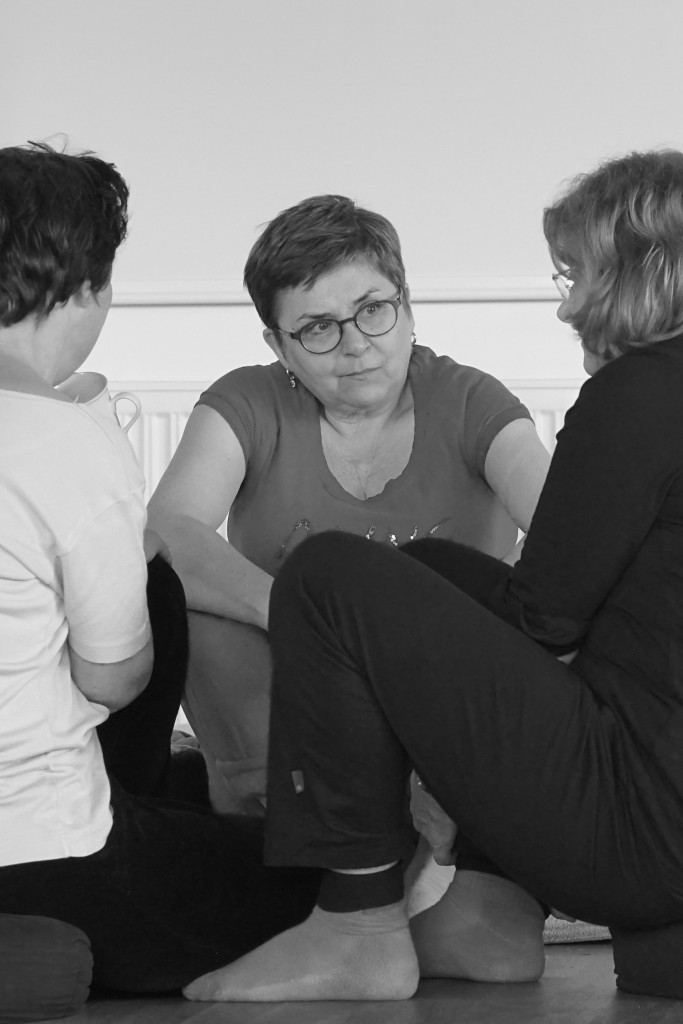Some History about "Postural Integration®"
compiled by the ICPIT Secretariat and Council Members.
The Origins of Postural Integration®, Bodymind Integration & PsychoCorporal Integration.
„Bodymind Integration” (since 2007 also known as „PsychoCorporal Integration”) originated with Dr. Jack Painter’s work on clients beginning in the late 1960’s. Dr. Painter (1933-2010) was a Ph.D. graduate of Emory University (Atlanta, Ga.) in Philosophy, Literature and Psychology and served as a professor at the University of Miami for 9 years. Influenced by Reichian Therapy (Wilhelm Reich), Rolfing (Ida Rolf) and Gestalt (Fritz Perls) traditions he found in his own search for personal clarity and in work with his clients, that a body-anchored approach was needed to bring these traditions together in his own approach. He received Gestalt training from Marty Fromm (Miami, Florida, an early pioneer in Gestalt work with Dr. Fritz Perls), as well as workshops directly with Perls. He received a complete program of individual sessions from Dr. Ida Rolf and Dr. Bill Williams (the founder of Soma). But through constant experimentation found his own ways of touching the body. In combining touch with a Reichian approach, he studied and collaborated with Dr. Raffaele Estrada Villa, Director of the Instituto Wilhelm Reich in Mexico City. As well as sessions and sharing and colleague work with Dr. Peter Levine, author of Waking the Tiger and a well-known Reichian therapist, founder of Somatic Experiencing®.
Central to Postural Integration®/Bodymind Integration, since its inception, is the view that
- body and mind are inseparable and do not stand in a causal relationship with “each other” since they are dimensions of the same phenomena. Thus holistic psychocorporal work with awareness and consciousness is always simultaneous work with body expression, movement and energy. And conversely work with the body, including deep work with breathing and myofascia, is also simultaneous work with awareness and consciousness.
- Postural Integration® is furthermore based on the notion of an „energetic flow” which is taken as the core of human experience. The promotion of this flow is considered as health, its persistent blockage is considered as illness. PsychoCorporal Integration presents a clear theory which uses but goes beyond the theories of F. Perls, MD and W. Reich, MD. It uses Gestalt claiming and experiencing as part of the process of transforming body armor.
From 1973 to the present, Dr. Painter has trained an extensive network of teachers (trainers) and practitioners in Postural Integration (from 1990 onwards also in Energetic Integration® and Pelvic-Heart Integration®), not only in most of the EU countries (Belgium, Holland, France, Germany, Italy, Austria, England) but also in Switzerland, U.S., Canada, Mexico, Nicaragua, New Zealand and Australia.
In 1988, ICPIT (Then called „The International Council of Postural Integration® Trainers”) was founded by Dr. Painter and the active trainers of Postural Integration® in order to stimulate collaboration amongst them and promote self-and critical reflection about Bodymind Integration and its goals. ICPIT has met yearly since then, has organized three congresses (see below), inviting therapists from not only Postural Integration®, Energetic Integration® and Pelvic-Heart Integration® but also major psychotherapy organisations, somatics, social work and family counselling. These congresses, the discussions on our work shared by trainers and practitioners in the ICPIT-council, as well as the yearly publication „Bodymind World News and Research Report” helped to develop the field of Body Psychotherapy and Bodymind Integration.
Two books by Dr. Painter outline many of the methods and concepts: Deep Bodywork and Personal Development and A Technical Manual of Deep Bodywork. (translated in several languages. A yet unpublished updated version of these books exists and is used by students.). Also Dr. Painter has contributed numerous articles in “Bodymind World News and Research Report.” Many books and articles by students of Dr. Painter have appeared during the last 30 years.
ICPIT recently published the book „Transformation of the Self with Bodymind Integration” in 2013 as an honouring of Dr. Painter and a celebration of „40 years of Bodymind Integration”.
In 2007, the ICPIT (Annual MEETING in Ghent) decided to rename itself to „The International Council of PsychoCorporal (Bodymind) Integration Trainers” (ICPIT). This change of name accompanied the formal acceptance of "Psychotherapeutic Postural Integration" (an adaptation of "first generation" Postural Integration® developed by the IFCC in Strassbourg for utilisation in a psychotherapeutic frame) as a method of Psychotherapy by both the European Association of Psychotherapy (EAP) and the European Association of Body Psychotherapy (EABP).
The application of the "therapeutic touch" of Postural Integration® and the "deep myofascial bodywork techniques" used in an integrated way are recognised in the IFCC approach as possible tools for psychotherapy. This was unthought of 40 years ago.
Other ICPIT Trainings, building also on the later developments of Jack Painter's work are not able to work within the field of psychotherapy. In some countries, like Italy, because of reasons of legislation, Postural Integration® can not be taught by our Trainers (Psychologists-Psychotherapists) as a psychotherapy to non-psychologists (who have exclusive rights to the profession of psychotherapist)....
Bodymind Integration is PsychoCorporal Integration, which also gave an impetus to the "field of Body Psychotherapy" to work in a more integrative way.
When „Bodymind Integration” started (circa 1969) in the U.S., (deep) bodywork and psychotherapy were separate lines of research. It is fair to say that the work of Bodymind Integration – first as Postural Integration® and then as an addition Energetic Integration® and Pelvic-Heart Integration® – helped bring these areas closer together.
How did this happen?
First Dr. Painter trained and worked closely with Dr. Alex MacMillan in Boston, who eventually established the Association of Body Oriented Psychotherapy which has helped bring bodywork more into the mainstream of psychotherapy in the USA.
Later, in cooperation with Dr. Richard Meyer, a psychiatrist-psychoanalyst from France and founder of Somatothérapie, Dr. Painter, as honorary president, helped with the program of The Third International Congress of Somatotherapy at Strassbourg in 1991. Also in organizing and directing the San Francisco 1995 International Congress of Somatics, 'THE LIVING BODY', Dr. Painter and Martyne Viens-Painter, brought these lines of somatic research and psychotherapeutic research even closer together. Several ICPIT-Trainers (Niall O'Siochain, Rosa-Maria Sevilla Padrón, Lavanya Delneste, Dirk Marivoet, Bernhard Schlage and so on, etc.), as well as many other body-psychotherapists and practitioners from the new field of Somatics were present during this milestone-congress: John Pierrakos, Chuck Kelley, Stanley Keleman, Stanislav Grof, Don Hanlon Johnson, Claudio Naranjo, Emilie Conrad-Daoud, Anna Halprin, Margot Anand, Peter Levine, Myron Sharaf, Robert Hall, Robert Schleip, Alex MacMillan, John Upledger, Richard Strozzi Heckler, Marvin Treiger, etc., etc.).
In collaboration with Drs. Willem Poppeliers, a Developmental Psychologist, Bio-Energetic Analyst and Postural Integration® Practitioner, Dr. Painter, also gave a strong impulse to help "ground” the therapist and "stay clear" in his/her sexuality while working with hands-on body-oriented therapy. Together they lead the very first "Sexual Grounding®” programme, now an independent form of psychosexual body-oriented psychotherapy, followed by the training of teachers and supervisors in its professional ASGTT management program of somatic and erotic/sexual transference and counter-transference in Body Psychotherapy.
Through participation in the International Association of Psychocorporal Therapy, which has given conferences in Mexico, Montreal, Boston and Ischia (It), representatives of ICPIT-Bodymind Integration have demonstrated to colleagues in research papers, workshops and roundtable discussions that Postural Integration® and Energetic Integration® offer powerful psychotherapeutic interventions (not claiming to be a psychotherapy) through an active form of body reading (to help the client discover the conflicts of energy and awareness at work in Bodymind), specific breath techniques and tissue manipulations. Dr. Painter has been a member of the Scientific Committee of this Association until his death and he and other ICPIT-members have continually called attention to and invited review of the assessment and intervention powers of PsychoCorporal Integration.
Since Bodymind Integration brings together Gestalt, Reichian, Deep Tissue Work, Therapeutic Touch, acupressure and movement awareness disciplines into a single unified framework it is only natural that many of our practitioners and trainers are qualified in these areas. Bodymind Integration has grown through contact with these areas, but as well has been giving an impetus for these areas, including Psychotherapy to open to a more integrative stance. Body and mind are touched upon and helped simultaneously.
The Three methods of PsychoCorporal (Bodymind) Integration use the same central methods and concepts, with different foci.
PsychoCorporal (Bodymind) Integration currently covers three methods – Postural Integration® (PI), Energetic Integration® (EI) and Pelvic-Heart Integration® (PHI). All of these make use of the same central methods and concepts with variations only in the areas of focus (Postural Integration® focusing on the softening and organization of planes of fascia and methods and Energetic Integration® focusing on the blockages in the energetic wave as manifest in bands of armor). Pelvic-Heart Integration® focusing on the part of the energetic wave that holds the specific splits between the heart and the genitals, masculine and feminine and love and sexuality).
As „PsychoCorporal Integration”, these three methods work with a dynamic style of "body reading", in which the client dialogues and claims parts of their armored experience. Also the use of certain types of breathing techniques, together with deep exploration of the body tissue and simultaneous verbal expression of feelings is based on a principle of non-causal simultaneity not pursued in other psychotherapies. All these aspects are facets of a central view of the individual as an energetic élan exhibiting physical, emotional and cognitive dimensions which are all part of an energetic wave. Blockages are seen also as running through all these dimensions. For example, held-up (upward) energy is part of physical inflation, pride and controlled thinking and our work with this blockage is to help in a surrender of the breath, feelings and tissues. Coming from this view, specifically formulated psychotherapeutic goals can easily be drawn by the therapist (if he/she is a psychotherapist) in agreement with the client.
Professional Trainings in Postural Integration®
ICPIT requires that Postural Integration® be offered in Trainings with a duration of minimum 3 years (and a minimum of 700 hours). Several Trainings in Postural Integration® are offered as a 4-year program (and over 1200 hours), or even a 5-year program (when combined with Energetic Integration®), leading to certification as a Practitioner for Postural Integration, a Practitioner for Energetic Integration®. After successful completion of the "advanced training," one can become an "Master Practitioner." Please Contact the Secretariat for more information about recognised training offers in your area.







